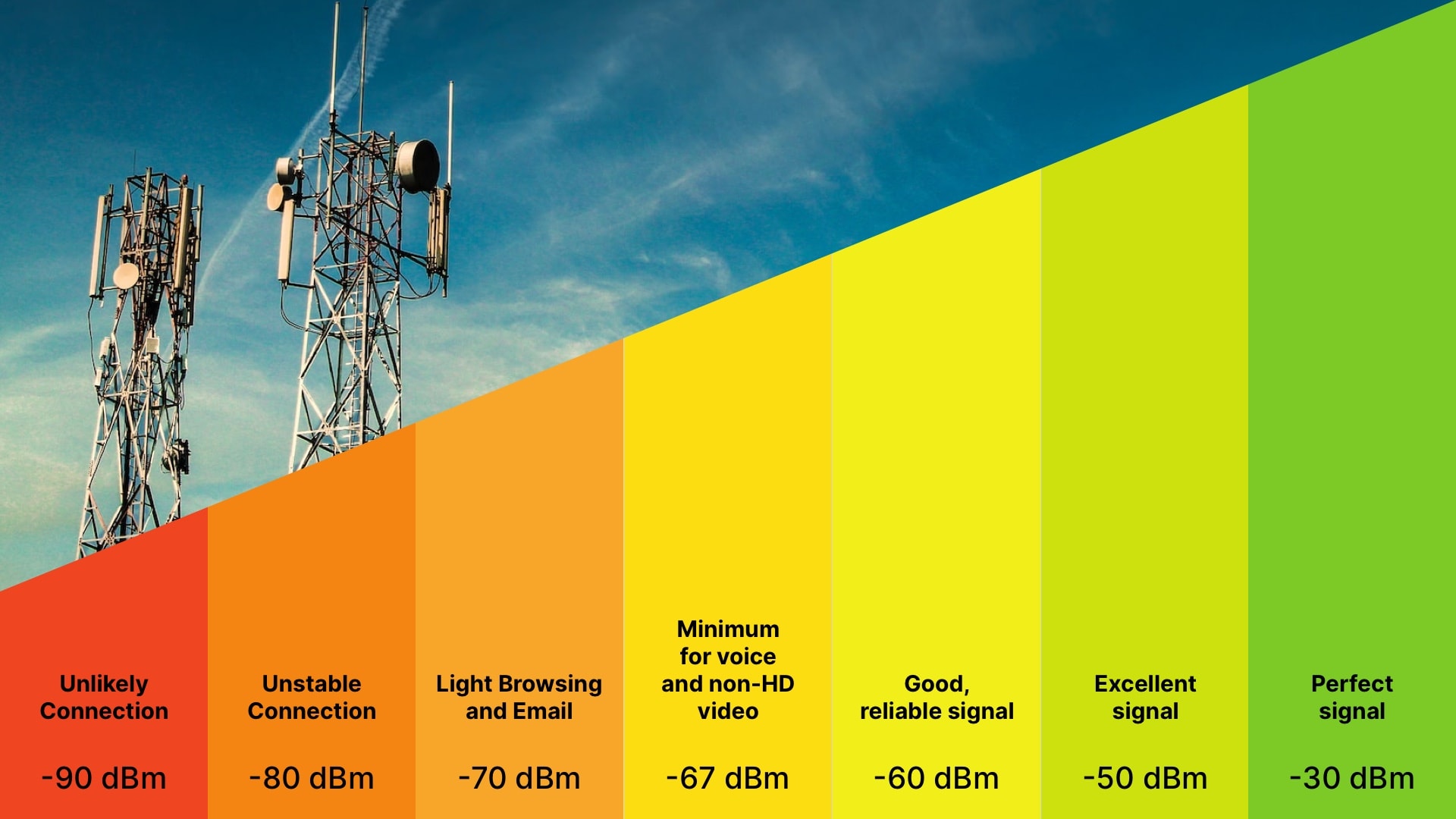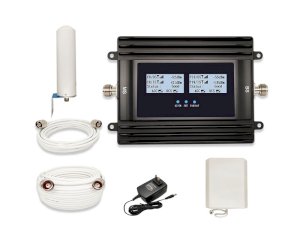
Your phone shows “3 bars” — but you can’t load a webpage. Your friend has “1 bar” — yet they’re streaming video. Why? Because signal bars lie. The real measure of mobile signal strength is dBm (decibel-milliwatts). And understanding it can save you from dropped calls, slow 4G, and dead zones.
In this guide, you’ll learn:
- What dBm actually means (in plain English)
- What dBm value is good, fair, or unusable
- How to check dBm on Android and iPhone (free tools included)
- How to boost weak signal — even in basements or rural areas
What Is dBm? (Decibel-Milliwatts Explained)
dBm stands for decibel-milliwatts — a unit that measures absolute power of a radio signal, referenced to 1 milliwatt (mW).
Unlike dB (which only shows relative change), dBm is absolute. That means:
- -50 dBm always means a strong signal
- -100 dBm always means a very weak one
This standard is used by all mobile carriers, engineers, and signal boosters worldwide — from 2G to 5G.
Fun fact: The “m” in dBm stands for milliwatt. So dBm = decibels relative to 1 mW.
dBm Signal Strength Chart: What’s Good vs. Bad?
| -50 to -70 | Excellent | Full bars, HD video, fast downloads |
| -71 to -85 | Good | Smooth calls, minor buffering |
| -86 to -95 | Fair | Occasional drops, slow data |
| -96 to -100 | Poor | Dropped calls, can’t send messages |
| Below -100 | Unusable | “No service” or constant searching |
Key insight: A difference of just 10 dBm means 10 times less signal power. So -80 dBm isn’t “a little worse” than -70 — it’s 10 times weaker.
How to Check dBm on Your Phone (Free & Easy)
On Android:
- Go to Settings → About Phone → Status → SIM Status
(Path varies by brand — Samsung, Pixel, etc.) - Look for “Signal strength” — it shows dBm (e.g., -82 dBm)
OR use free apps:
On iPhone:
- Dial 3001#12345# and press Call → enters Field Test Mode
- You’ll see a negative number (e.g., -91) — that’s your dBm
- To exit: press Power button, then Home (or swipe up)
Pro tip: Walk around your home while watching dBm. Find the best spot for your router or booster.
FAQ: Real Questions from Google Search
What is a good dBm for 4G and 5G?
- 4G: -50 to -85 dBm is usable; -70 or higher is ideal.
- 5G: Due to higher frequencies, -60 to -90 dBm is common. Below -95 = unreliable.
Is -85 dBm good?
Yes! -85 dBm is the lower edge of “good” for 4G. You'll get calls and basic data, but video may buffer.
What does signal strength dBm mean?
It's the actual power your phone receives from the cell tower — measured in dBm. Lower (more negative) = weaker.
Can I boost my dBm signal?
Yes! A cellular signal booster can turn -100 dBm into -70 dBm — transforming “no service” into full bars.
How to Improve Weak Signal (Even in Dead Zones)
If your dBm is below -90, here’s how to fix it:
Use a Signal Booster (Repeater)
Modern boosters amplify:
- GSM (2G voice/SMS)
- 4G/LTE (video, apps)
- 5G (ultra-fast)
Works in homes, offices, vehicles
Covers 500–30,000 sq. ft.
Reposition Your Router or Antenna
- Place near a window facing the nearest tower
- Avoid metal, concrete, or basements
Switch to Wi-Fi Calling
If cellular signal is weak but Wi-Fi is strong — enable Wi-Fi Calling in phone settings.
Need a Signal Booster?
We offer carrier-compatible boosters for every need:
- Home & Office Boosters – for apartments, houses, warehouses
- Vehicle Boosters – for cars, trucks, RVs
- 5G-Ready Models – future-proof your connection
All kits include antennas, cables, and 24/7 support.
Free shipping + 30-day money-back guarantee.
Not sure which booster you need? Contact our experts — we’ll help you choose in 2 minutes.







